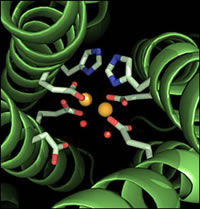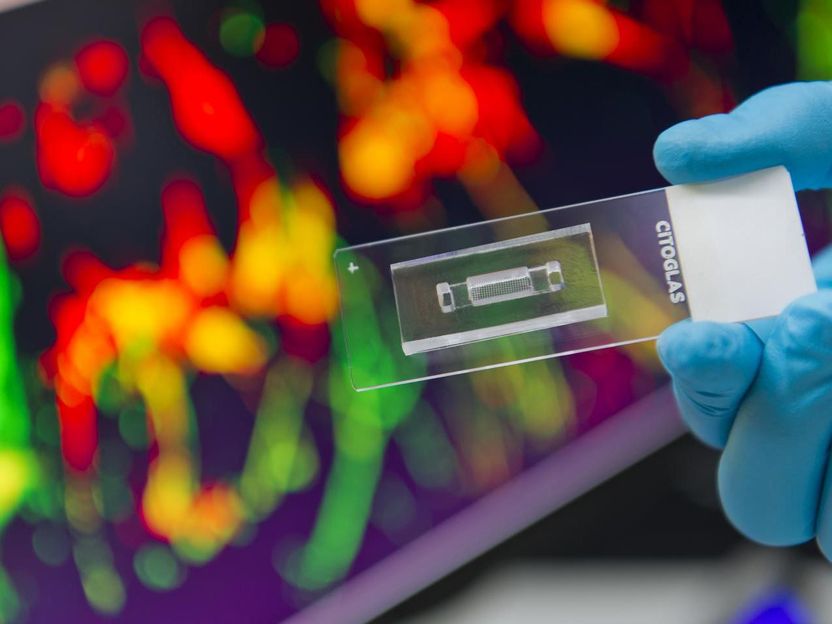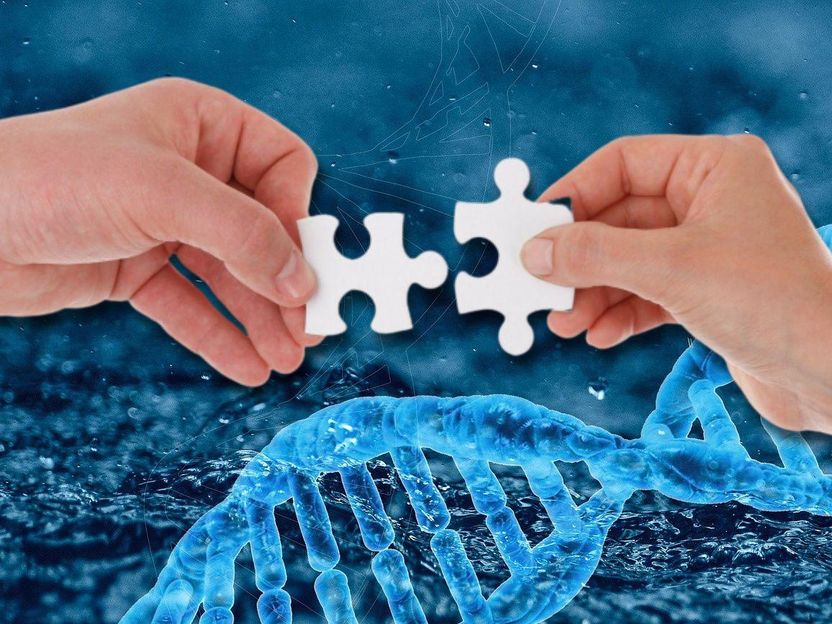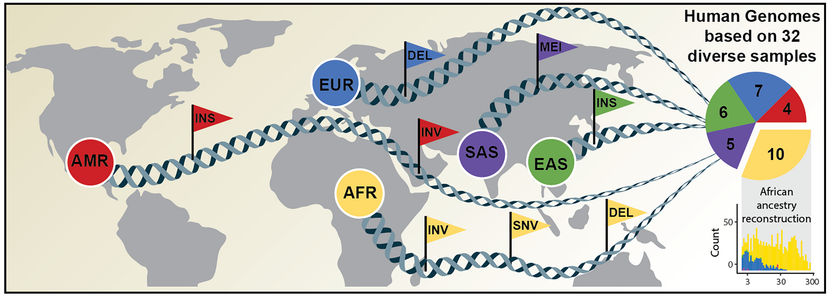Vibrations key to efficiency of green fluorescent protein
Charting femtosecond energy flow could aid redesign of molecules to improve light capture
University of California, Berkeley, chemists have discovered the secret to the success of a jellyfish protein whose green glow has made it the darling of biologists. The researchers' study of green fluorescent protein (GFP) and the structural changes it undergoes when it fluoresces is published in Nature .
GFP has replaced many dyes in biological studies because it is non-toxic and, when attached to a gene and inserted into an organism, serves as a bright, glowing confirmation that the gene has hit its target. Obtained originally from a bioluminescent Pacific Ocean jellyfish, the protein has been mutated and engineered to absorb and emit various colors.
The UC Berkeley chemists used extremely short laser pulses – 20 femtoseconds – to take snapshots of GFP to determine the structural changes it undergoes when it fluoresces. Only a rapid, strobe-like laser can freeze atoms vibrating 100,000 times every nanosecond.
Their study not only sheds light on how GFP works, but also proves the value of new, ultrafast, pulsed laser techniques, specifically a method called femtosecond stimulated Raman spectroscopy, that take snapshots fast enough to freeze vibrating molecules and thereby distinguish the rapid steps involved in chemical and atomic reactions. One of the researchers' goals is to understand the processes of absorption and emission of light in such detail that the light-absorbing molecule can be redesigned to more efficiently capture sunlight in photovoltaics, or solar cells.
The transfer of a positively-charged hydrogen atom – a bare proton – along a reaction chain in GFP generates a green flash of light. The laser snapshots show that when the light absorber, or chromophore, nestled in the middle of the protein barrel absorbs an incoming photon of blue light, it starts vibrating, and the electrons start sloshing around the chromophore until it is aligned just right for the proton to hop via a water molecule to a nearby amino acid in the protein. From there, it continues down the reaction chain, creating a state with a negatively charged chromophore that emits green light.
Previous studies had shown that after the chromophore absorbs blue light, it undergoes proton transfer, and green light is emitted. In the current study, Richard Mathies, UC Berkeley professor of chemistry, Chong Fang, a UC Berkeley postdoctoral fellow in the Department of Chemistry, and their colleagues could actually resolve the early stage of this proton transfer reaction, taking snapshots of the vibrational wagging of the chromophore skeleton in sync with the electron cloud in the chromophore sloshing back and forth. However, the wagging oscillation might have stopped after a few picoseconds, when the chromophore and its vicinity are aligned just right for the proton to hop off down the reaction chain, and the whole protein shines bright green – which it does in its own good time, in about 3 nanoseconds.
"We don't need the wagging oscillation to persist throughout the proton transfer process, we only need it to position the chromophore rings correctly relative to the rest of the reaction chain, and that initiates the processes leading to a flash of green light," Fang said.
Other news from the department science
Most read news
More news from our other portals
See the theme worlds for related content
Topic World Spectroscopy
Investigation with spectroscopy gives us unique insights into the composition and structure of materials. From UV-Vis spectroscopy to infrared and Raman spectroscopy to fluorescence and atomic absorption spectroscopy, spectroscopy offers us a wide range of analytical techniques to precisely characterize substances. Immerse yourself in the fascinating world of spectroscopy!

Topic World Spectroscopy
Investigation with spectroscopy gives us unique insights into the composition and structure of materials. From UV-Vis spectroscopy to infrared and Raman spectroscopy to fluorescence and atomic absorption spectroscopy, spectroscopy offers us a wide range of analytical techniques to precisely characterize substances. Immerse yourself in the fascinating world of spectroscopy!




























































